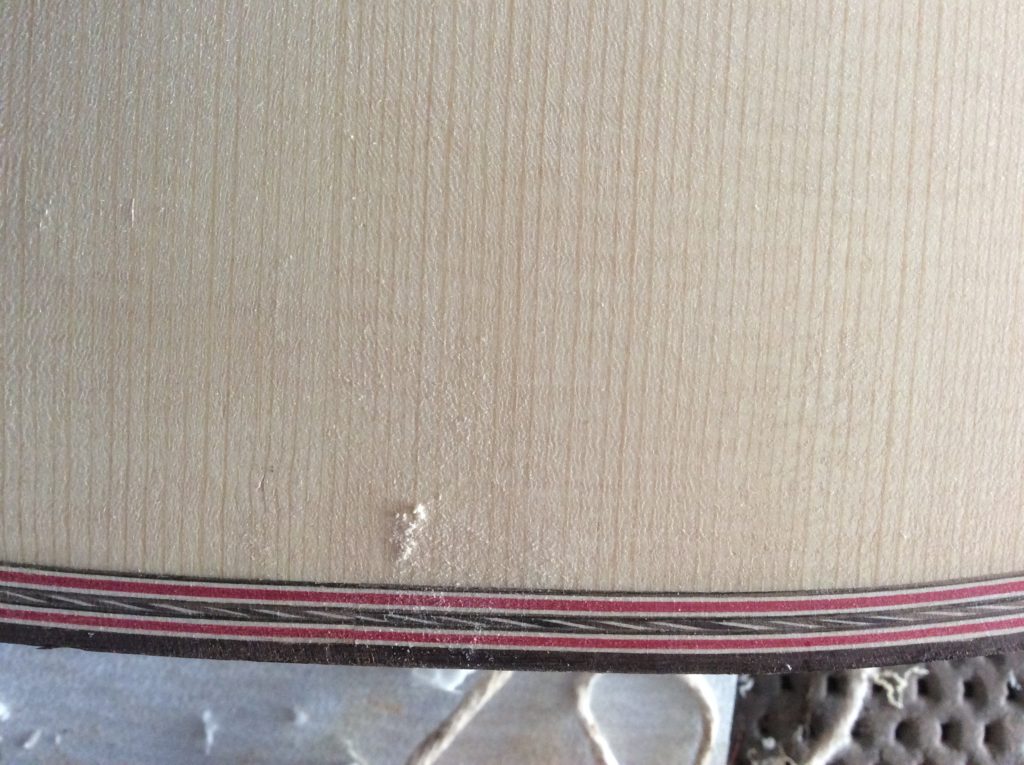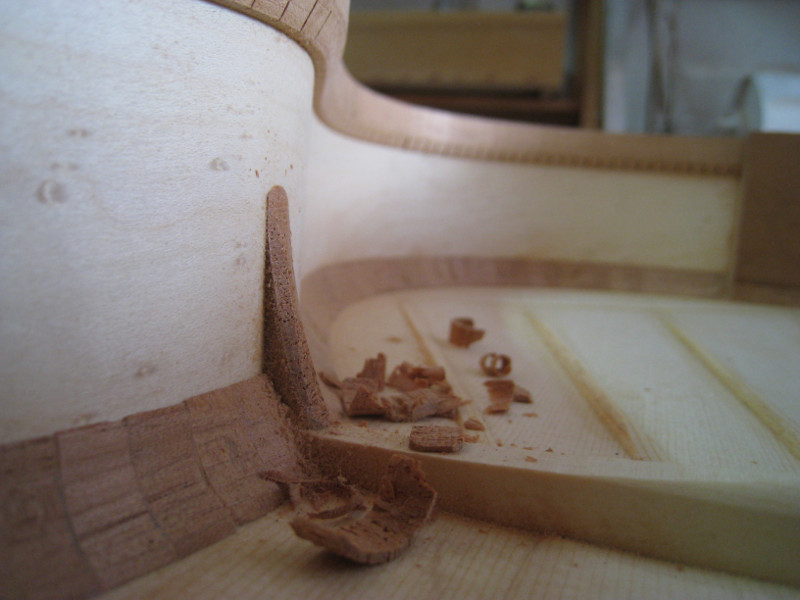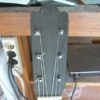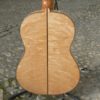I am sure I have written already about the use of the term workmanship here or on one of the guitar forums. Guitar connaisseurs speak of “impeccable workmanship”, often using the term to describe something that in reality is badly made but very busy or ambitious. I suppose it is understandable because these people know nothing about guitar-making. I do wish they would stop though. Good workmanship is the reflection of organized, conscientious effort which reflects an understanding of aesthetics and function. It is by no means about bling. Furthermore, despite the sensation of quality that good workmanship can transmit, it isn’t about perfection either. I took a few pictures yesterday just for illustration. None of these are perfect, one of them could even be considered to be too “busy” but there are elements of refinement in all of them. In the first photo the challenge is planning the job in such a way that the corners of the white veneers line up at all points along the “log” so that each corner on the tiles then  lines up with the next and creates the desired effect. When placed side by side.
lines up with the next and creates the desired effect. When placed side by side.
Sometimes on purflings I will stagger the joints of the two sides which confuses the observer as to where the joint is.  Of course the joint is always placed off-centre as the eye goes automatically to the centre to look for it.
Of course the joint is always placed off-centre as the eye goes automatically to the centre to look for it.
Making the herringbone strips come together both at the centreline and placing a MOP piece on the same line is challenging but the symmetry Torres used is very nice. Ideally it should look like the thin veneer (backbone) of the herringbone is continuous but joints in white wood meeting at endgrain are almost always visible.
the symmetry Torres used is very nice. Ideally it should look like the thin veneer (backbone) of the herringbone is continuous but joints in white wood meeting at endgrain are almost always visible.
This design obliges me to start glueing binding and purfling at the heel as Iast-minute fitting might go well or might go badly.  I try to make a continuous circle using the bee-stings and the contour of the heel. On the original it is not quite so clear on the heel but the curve of the bee-stings certainly is.
I try to make a continuous circle using the bee-stings and the contour of the heel. On the original it is not quite so clear on the heel but the curve of the bee-stings certainly is.
This last one I took from a bit of a vertical angle so the perspective makes it look like it is wedge-shaped while it really isn’t. I saw this on another maker’s guitar and though I would try it. It is definitely more work than the using just the binding to frame the side the way we usually do. 


 Other changes I made were to use very lightweight wood all round, a top as thin as I dared and to use less doming than the original. I had considered using spaced peones but I severely dislike the small spaces left in between that break up the evenness of the interior. I am also looking for a soft fretwire to use hoping that the strings will last longer.
Other changes I made were to use very lightweight wood all round, a top as thin as I dared and to use less doming than the original. I had considered using spaced peones but I severely dislike the small spaces left in between that break up the evenness of the interior. I am also looking for a soft fretwire to use hoping that the strings will last longer. 
 Myself and two other makers were asked to present our Torres copies. This year I will be attending once again to present “The Granada School of Guitar-makers” on July 2. This will be a chance for the international attendees to have a look at the book and to buy it in Cordoba.
Myself and two other makers were asked to present our Torres copies. This year I will be attending once again to present “The Granada School of Guitar-makers” on July 2. This will be a chance for the international attendees to have a look at the book and to buy it in Cordoba. 



















